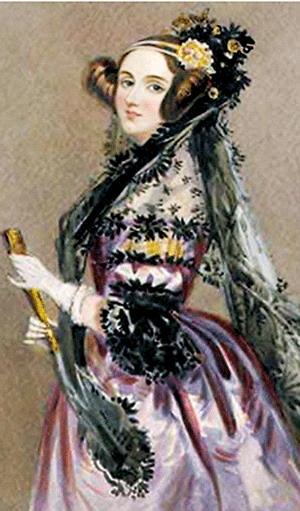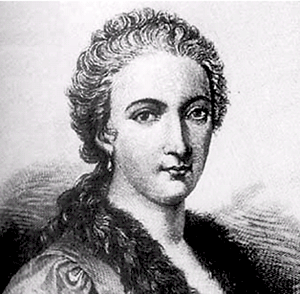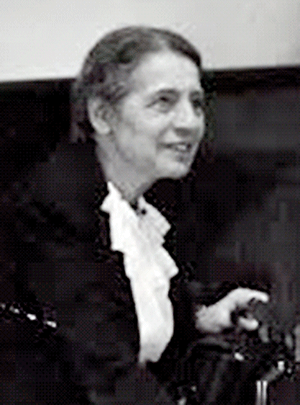Byron’s daughter’s vision led to world’s first computer

Ada Lovelace: Ahead of her time
Lise Meitner’s contributions to science were significantly overlooked and uncelebrated for political reasons. Born to an Austrian-Jewish family in 1878, Lise was able to receive a private education because of her supportive parents. Public education ended for girls at age 14. Lise became only the second woman to obtain a doctoral degree in physics at the University of Vienna.
Lise was a member of the famous Hahn-Meitner-Strassmann team whose research area was on transuranic elements. She was recruited by Otto Hahn and Fritz Strassman as a member of their research team at the University of Berlin. In view of her academic prowess, Lise eventually became a full professor in Physics at the university and the first woman in Germany to do so.
Lise’s research work spanned nearly two decades during which time a distinct divide was formed between ‘Jewish Physics’ and ‘German Physics’ as a result of World War II. The Hahn-Meitner-Strassmann research team may have been on the brink of producing groundbreaking research when the war broke out. Given her Jewish heritage, Lise was forced to move to Sweden but continued to work on her research theories with Hahn and Strassman through correspondence and even secretly met Hahn in Copenhagen, Denmark to plan out their experiments.
Meitner was able to make further theoretical progress while still in Sweden with support from her nephew Otto Frisch. Hahn had received confounding observations that bombarding the Uranium nucleus with neutrons had not increased its size. Instead, his experiments seemed to be producing Radium – an atom with a smaller nucleus. Lise and Frisch realized with the addition of neutrons to the Uranium nucleus, it became unstable, producing two nuclei. The discoveries were of significance since no one believed that the nucleus of an atom could be split. After Lise relayed the message to Hahn and Strassman, their experiments were carried out again and the hypotheses on nuclear fission was confirmed.Hahn and Strassman published their findings on nuclear fission with no credit given to Lise mostly due to the pressure from the Nazi regime to leave out their Jewish colleague.Nevertheless, Lise fully understood Hahn’s intention in doing so. Soon after, Lise and Frisch published their own conclusions on the experimental results from Hahn and Strassman during which they formally coined the word ‘fission’.

Maria Gaetana Agnesi chose spiritual and moral satisfaction over academic accomplishment
Lise’s experimental work was to have a far greater legacy. Lise was offered a position in the Manhattan Project, which she turned down having no desire to work on armaments. However, Frisch joined the project as he believed in the urgent need to defeat the Nazis.
When, in 1944, the Nobel Committee decided to award the Nobel Prize in Chemistry to Hahn, everyone agreed that the prize could have been shared between Hahn and Lise.
Ada Lovelace
One of the pioneer female mathematicians whose aptitude and skills eventually led to the invention of the world’s first computer was Ada Lovelace, born on December 10, 1815. Her father was the famous English poet, Lord Byron. Her mother had a passion for mathematics that her father once called her ‘the princess of parallelograms’. Ada’s parents separated a month after her birth, leaving Ada’s education entirely in the hands of her mother.
Ada’s mother was keen on her daughter receiving a scientific education. She was privately tutored and her excellence displayed in mathematics was encouraged by another female mathematician – Mary Somerville, who was also one of her tutors. When Ada was 17, she caught the attention of Charles Babbage, who is best remembered for originating the concept of a programmable computer.
In 1835, she married William, 8th Baron King, becoming Lady King. They had three children. Immediately after the birth of her youngest child, Ada’s health took a turn for the worse and throughout her lifetime, she was constantly ill.
When Charles Babbage embarked on a journey to create a machine to do complex mathematical calculations automatically and developed a prototype of the machine Ada rendered her expertise to further modifying the prototype. Following the construction of the ‘analytical engine’, Ada developed a programme for finding Bernoulli numbers, envisioning that the descendants of the engine may one day use the results to create music or images. Despite the brilliant ideas which were interwoven around the machine, due to the lack of artisans who carried the expertise to make the necessary mechanical parts, the analytical engine did not progress further into performing complex calculations.

Lise Meitner: Victim of anti semitism during World War II
At age 36, she was diagnosed with cancer and passed away soon after. Ada and Babbage’s work came into being almost after a century when programmable computers were built in 1940. In the 1970s, the US Department of Defense decided to create a standardized computer language to use for its applications, which was named ‘ADA’ in her honour. The language is still being used in systems such as air traffic control, in planes such as Boeing 777, in rail transport such as the TGV in France, the New York subway, the London tube and in space missions such as the Mars Express and the Beagle 2.
Maria Gaetana Agnesi
Born in 1718 in Italy, Maria Gaetana Agnesi was a child prodigy. She was the eldest of 21 children (including half-siblings) and her wealthy and literate parents provided her a private education. Her father was a professor of mathematics at the University of Bologna in Italy. At the age of 9, Maria was able to speak many modern languages and was referred to as the ‘Seven-Tongued Orator’. She was even able to deliver a lecture in Latin on the defence of higher education for women at the age of 9. She regularly attended academic gatherings held at her home by her father.
Despite her scientific inclinations, Maria was deeply religious. She wanted to enter a convent and work with the poor – a request vehemently declined by her father.
At the age of 20, Maria began working on ‘Analytical Institutions for the Use of Italian Youth’ – a treatise on the differential and integral calculus. Compiled mostly to amuse herself and as a textbook for her younger siblings, the two volumes of the manuscript were greeted with much enthusiasm by the academia. Maria is considered the first woman to write a mathematics handbook.
Maria is mostly remembered for her geometric description of a bell-shaped curve known as the ‘witch of Agnesi’ through literal translation. Her accomplishments were critically acclaimed in Europe. In 1750, Pope Benedict XIV recognized her exceptional talents and offered her a position as an honorary lecturer at the University of Bologna. This subsequently led to her being appointed as a professor of mathematics in the University of Bologna, the first woman to be granted the appointment.
Maria devoted the last four decades of her life to studying theology, charitable work and serving the poor. Her life is a reflection of some of the common features of women who were able to pursue scientific careers. She eventually chose spiritual and moral satisfaction over academic accomplishment – a choice and characteristic which shaped many lives of women scientists throughout history.
( The writer is Senior Lecturer (Temporary) Technology Programme, Faculty of Applied Sciences, Rajarata University of Sri Lanka, Mihintale)


